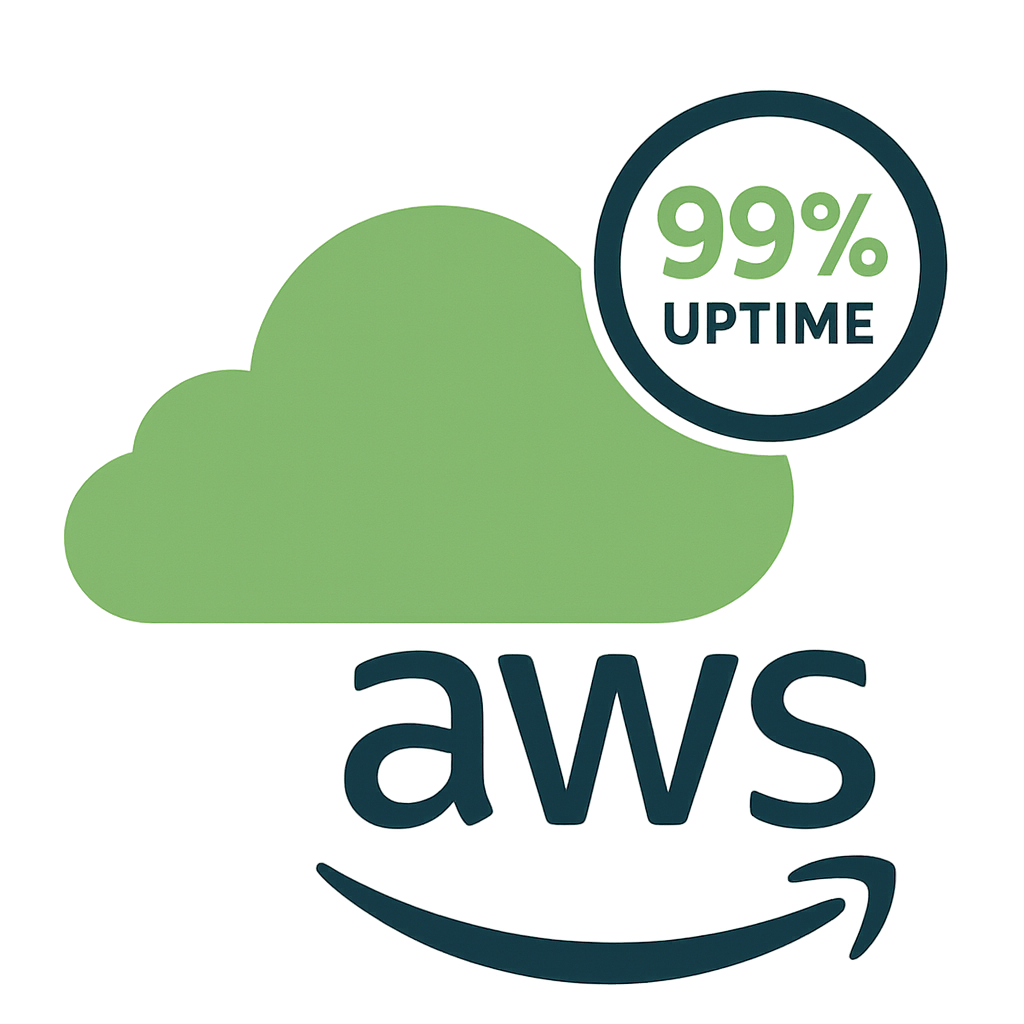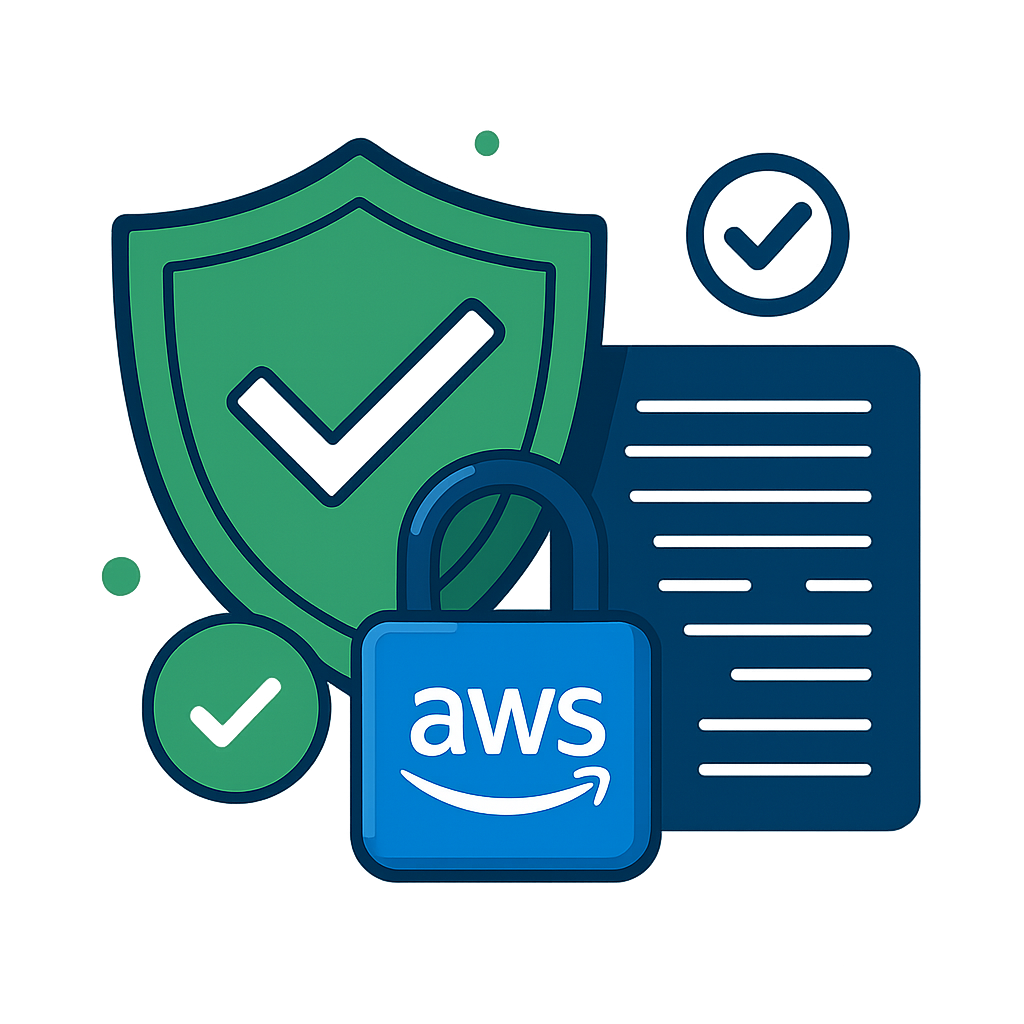Cloud Architecture You Can Trust
AWS Reliability & Cloud-Hosted Infrastructure
Build on a platform engineered for resilience, security, and scale. This guide explains why cloud-hosted beats on-site, how reliability is achieved on AWS, and how security, compliance, and cost efficiency all improve with the right design.
1. Why Cloud-Hosted Beats On-Site
On-site hardware locks you to a single building, limited power and cooling, and manual maintenance windows. Cloud-hosting on AWS gives you elastic capacity, built-in redundancy, and managed services that remove undifferentiated heavy lifting.
Practical Advantages
- Redundancy by design: Run across multiple data-centers (Availability Zones) to remove single points of failure found in most server rooms.
- No forklift upgrades: Hardware refreshes, firmware, and facility constraints fade away—capacity is a setting, not a shipment.
- Anywhere operations: Administer, observe, and restore from anywhere; no late-night datacenter visits for failed disks or PSUs.
- Fewer maintenance windows: Rolling updates and blue/green patterns reduce or eliminate downtime.
- Right-sized costs: Move from big capital outlays to usage-based spend; scale up/down with seasonal demand instead of over-provisioning.
New to the cloud? Read the intro on Cloud computing.
Design tip: Treat “the datacenter” as code. Version infrastructure, review changes, and promote safely—just like application code.

2. How Reliability Is Achieved on AWS
Reliability is about eliminating single points of failure, rapid recovery, and predictable change. AWS provides the building blocks; your architecture decides how they’re assembled.
Core Patterns
- Multi-AZ deployments: Run instances, databases, and storage across separate facilities in a Region to withstand localized failures.
- Load balancing + health checks: Continuously route around unhealthy targets for zero-touch failover at the traffic layer.
- Auto scaling: Replace failed nodes automatically and add capacity during spikes to keep SLAs steady.
- Managed data services: Use managed databases and message queues to inherit patching, replication, and repair workflows.
- Backup & DR strategy: Automate snapshots, cross-Region copies, and defined RTO/RPO with regular game-day tests.
- Infrastructure as Code (IaC): Recreate entire environments deterministically for reliable rollbacks and disaster recovery.
Observability & Change Management
- End-to-end telemetry: Centralized logs, metrics, and traces reveal early signals and reduce MTTR.
- Immutable deployments: Blue/green or canary releases limit blast radius and minimize customer impact.
- Runbooks & game days: Practice failure scenarios to validate alarms, escalation paths, and recovery steps.
For deeper guidance, see the AWS Well-Architected Framework.
Rule of thumb: If a component can fail, assume it will—design for redundancy, automate replacement, and observe everything.

3. Security & Compliance in the Cloud
Security in the cloud uses a shared responsibility model: AWS secures the infrastructure; you secure what you build on top. The advantage is modern controls, centralized policy, and continuous auditability.
Foundational Controls
- Identity-first access: Fine-grained roles and least-privilege policies with short-lived credentials.
- Network isolation: Segmented virtual networks with tight security policies and private endpoints for sensitive services.
- Encryption everywhere: Encrypt data at rest and in transit; use managed key services for rotation and auditing.
- Patch & config posture: Baseline hardened images, automated patching, drift detection, and policy-as-code.
- Audit trail: Capture API actions and resource changes for forensics and compliance reporting.
Compliance Alignment
- Framework coverage: Support for common industry standards and regional requirements through documented controls.
- Data residency options: Keep workloads in chosen Regions to meet locality or sovereignty needs.
- Continuous evidence: Centralized logs, configs, and reports simplify assessments and vendor due diligence.
Practical step: Start with identity, logging, and encryption baselines. Add network segmentation and automated compliance checks as you grow.

4. Scalability & Cost Efficiency
Scale to meet demand, then scale back to save. Align spend to value with usage-based pricing and right-sized footprints that evolve as your traffic and data grow.
Scale Without Re-Architecture
- Horizontal scaling: Add instances behind a load balancer to handle more concurrent users cleanly.
- Elastic storage: Grow storage on demand instead of buying for peak years in advance.
- Event-driven design: Queue, stream, and process spikes smoothly with decoupled services.
Cost Ownership
- Right-size continuously: Use the smallest profiles that meet performance goals; adjust as usage changes.
- Visibility & tagging: Attribute costs to products or teams and make informed trade-offs.
- Pricing models: Blend on-demand with commitment-based discounts for steady workloads.
Optimization loop: Measure → right-size → commit where stable → automate off-hours scale-down → repeat quarterly.



